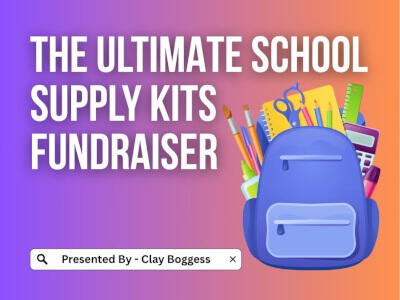
High school selling strategies that will set your group apart.
What if you could poll the best fundraising companies in America and ask them what they felt the most successful high school groups were? What do you think their answers would be? Usually, the answer would be unanimous: performing arts, sports teams, and spirit squads. Now, that's not to say that other groups are unsuccessful. Several factors go into determining the success of a group. But in general, those three groups tend to do better than most.
Strong high school groups reach their financial goals because they have apparent and well-defined financial needs. Their sponsors are typically highly motivated and extremely organized. The students are involved and are part of a motivational support structure that fosters a shared commitment to one another and the group. As a result, students are more dedicated to the group's needs and goals.
Solid Student Accountability
Effective high school organizations consist of students who must work hard on a group-related project to make a good impression on the sponsor. Many sponsors make fundraising mandatory. It also helps that their students usually meet consistently. This allows sponsors to monitor sales progress.
But what if you're not a performing arts, sports teams, and spirit squad sponsor? Perhaps you're unsatisfied with your fundraiser and are looking for ways to improve your results. You might consider changing your fundraising product, but before you do that, consider the following:
Successful High School Fundraiser Strategies
You should consider incorporating the following high school fundraiser strategies that have been proven to bring in more money, regardless of the type of group or product sold:
- Have an official kickoff meeting. Don't just hand out your fundraising brochures as your students walk out the door. Take the time to sell the program to them. You'll get what you put into your program; there's no better investment than laying a solid foundation. Talk with your students about what they'll be selling and what they can win due to their efforts. By meeting with your students to launch your sale, you are instilling in their minds the importance of the fundraiser.
- Communicate your purpose and goal. Do your students understand why they're selling, and can they communicate that to potential customers effectively? Make sure they know what your sales expectations are. Do you want them to sell ten items or 25? What will they get if they exceed the goal? Will the student who sells the most win anything?
- When will the sale be over? Here's something that most sponsors don't understand. Giving your students more time to sell doesn't necessarily lead to more sales. If you give your students a stop date, they'll treat the sale more like a race. Otherwise, your campaign will drag, and students will procrastinate or lose interest. Most high school sales are made within the first 3-4 days. A two-week sale is usually optimal.
- Promote your fundraiser. Don't assume your students will remain focused on making sales once the kickoff ends. You'll need to remind them to keep selling and hold them accountable. This is also an excellent time to revisit essential things you'll want them to remember about the sale.
- Meet regularly. To promote your fundraiser effectively, you must meet with them periodically during the sale. Some sponsors find this easier to do than others, but most will find it worthwhile to make special meeting arrangements.
- Offer additional incentives. Most school fundraising companies offer standard prize programs. Many feel this is enough of a motivator; however, successful sponsors understand that if they want good results, they must offer more to their students. Learn how additional school fundraiser incentives improve sales.
- Your enthusiasm is contagious. If you're excited and motivated about your sale, chances are your students will also be. Unfortunately, the opposite is also true.
Author Bio
Clay Boggess has been designing fundraising programs for schools and various nonprofit organizations throughout the US since 1999. He’s helped administrators, teachers, and outside support entities such as PTAs and PTOs raise millions of dollars. Clay is an owner and partner at Big Fundraising Ideas.



